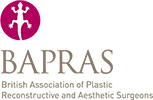Rhinoplasty – things to know
A rhinoplasty operation covers a multitude of procedures but is quite possibly the most difficult cosmetic procedure to get right.
In the hands of experts the outcome can predictably reduce and improve the shape of your nose. Again as with all cosmetic procedures a detailed consultation with a clinical examination (including an internal nasal inspection) is mandatory.
Your concerns must be outlined to the surgeon in particular the aspect of nasal reshaping that you would like most are to have done. Traditionally the dorsal bump is reduced and removed and this can be done through the “closed” technique or “open” technique. Tip reshaping is complex and often always requires the “open“ technique all of the structures are displayed to the surgeon who then reshapes the tip of the nose. Sometimes cartilage (gristle) is harvested from the septum of the nose or the cartilage of the ear and used as structural support to aid tip reshaping. These are called cartilage grafts. The type and shape of the grafts ultimately determines how the shape of the tip is re-formed. Occasionally grafts are taken from the rib cage and in certain clinical situations this is diced up and then wrapped around a further graft of fascia taken from the temple area of the head. The structure so formed is then placed on the back of the nose under the skin to produce a straight part aesthetic shape. The long-term results of these are in certain clinical cases produces a lasting effect. It must be emphasised that only certain patients are offered this technique. The majority of patients just want a reduction in the height and the proportions of the nasal tip which remains in harmony with the rest of their face.
What is an Osteotomy?
This is the technical technical term for breaking a bone and a nasal osteotomy aims to break the nasal bones which are at the root in the top of the nose in a desired fashion to allow the surgeon to re-form that part of the nose. Often and osteotomy is undertaking using specialist equipment that allows the surgeon control of how the osteotomies is done in what direction the bones are fractured and how they are reset. Newer techniques rely on a high energy ultrasound to undertake this part of the operation.
Recovery.
Regardless of the technique used the recovery is long and predictably involves swelling of the whole nose. Splints are used in the first two weeks to allow the broken bones to set after which you will be reviewed in clinic until 8 to 12 weeks after surgery occasionally the swelling lasts up to 18 months!. The swelling and extent of surgery is greater when it is a revision operation and if you have suffered any blunt nasal trauma in the past.
What to expect.
A healthy approach when you’re considering a nasal reshaping is to not to have any fixed ideas of what you would like to end up looking like. Sometimes clinics offer a morphed image to try and illustrate what you might look like following the procedure but this is often only for illustrative purposes and not a guarantee. You will be shown some typical results in order to help you make the decision if this is the procedure for you.
Special circumstances.
An important consideration is the quality of the skin covering the nose thus thick sebaceous oily skin is much more difficult to reduce than in soft supple skin similarly when the skin is thin then it is prone to complications such as a tear in the skin and or post-operative redness. Ethnically defined nasal shape is also a consideration with a Afro-Caribbean noses particularly difficult to reshape often due to the thick skin but also the lack of projection of the nasal features and spread of the nostrils. The latter will almost certainly require some form of cartilage or bone grafting to lift the nasal dorsum thus reducing the flatness to the nose often this can be coupled with reduction of the nostrils. The latter leaves scars along the outer part of the new nostril area and sometimes these are obvious.
What to do.
Be clear on what you are trying to achieve. Be honest with your surgeon who will likewise be honest and clear with you. Be realistic about what you can expect to achieve in one operation. If you are not then the dissatisfaction rate is high. You should asked to speak to a previous patient who is been done recently see you can get a realistic outcome from the procedure that has been prescribed for you. If you smoke you must stop smoking before any surgery is undertaken this includes vaping and nicotine patches.









